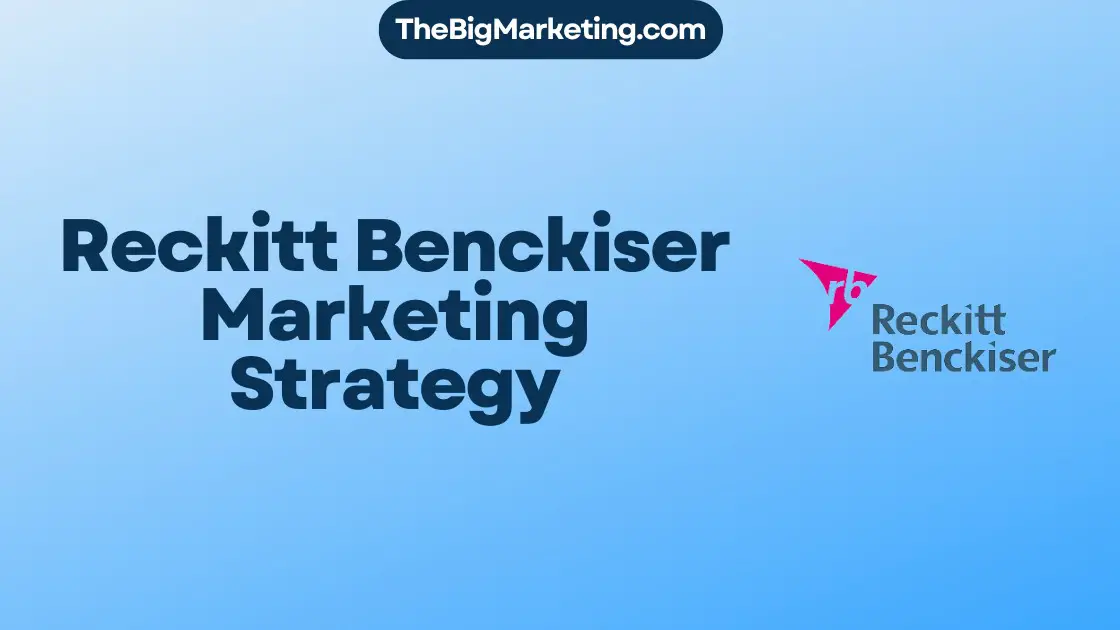Have you ever wondered why consumers make certain purchasing decisions? Why do some people prioritize sustainability while others seek products that signify success? Understanding consumer behavior is crucial for successful marketing campaigns, and that’s where VALS comes into play.
VALS, which stands for Values and Lifestyles, is a powerful marketing tool that segments US adults into eight distinct types based on psychological traits and key demographics. This segmentation allows marketers to gain deeper insights into consumer behavior and develop targeted strategies that resonate with their target audience.
The VALS Framework serves as a guide for understanding consumer motivations and resources, enabling marketers to create customized consumer profiles and adopt distinctive communication styles. By tapping into VALS, businesses can unlock a fresh perspective on consumer behavior and make informed decisions to drive engagement and achieve better results.
Key Takeaways:
- VALS is a marketing tool that segments US adults into eight distinct types based on psychological traits and key demographics.
- The VALS Framework helps marketers understand consumer motivations and resources.
- By leveraging VALS, businesses can create customized consumer profiles and develop targeted strategies.
- VALS provides a fresh perspective on consumer behavior and enables distinctive communication styles.
- Applying VALS in marketing can lead to better engagement and improved results.
Understanding the VALS Framework
The VALS Framework is a comprehensive tool for categorizing consumers based on their primary motivation and resources. By understanding consumer attitudes through the VALS Framework, marketers can gain valuable insights into consumer behavior and develop effective marketing strategies that resonate with their target audience.
At the core of the VALS Framework are three primary motivations: ideals, achievement, and self-expression. Consumers who are driven by ideals prioritize knowledge and principles in their decision-making process. They are often drawn to products and services that align with their beliefs and values.
On the other hand, consumers motivated by achievement seek products that are associated with success and accomplishment. They are attracted to products that emphasize their social status and provide tangible evidence of their achievements.
Consumers motivated by self-expression desire opportunities for social or physical activity, variety, and risk-taking. They value experiences and are often early adopters of new trends and innovative products.
While primary motivation is a key factor in the VALS Framework, resources also play a significant role in shaping consumer behavior. Resources such as energy, intellectualism, impulsiveness, and demographics determine how consumers express their primary motivation in the marketplace.
The VALS Framework provides marketers with a deeper understanding of consumers and their preferences. By analyzing the primary motivation and resources of their target audience, marketers can tailor their messaging, products, and services to effectively engage and satisfy their customers.
Understanding the VALS Framework enables marketers to create more targeted and relevant marketing campaigns, resulting in increased consumer engagement and improved business outcomes.
Applying VALS in Marketing Strategies
Marketers can leverage the VALS methodology to enhance their marketing strategies and drive better results. There are several ways to apply the VALS framework in business and brand development, allowing companies to effectively engage with their target audiences and create products that cater to their needs.
1. Understanding the Target Audience
One application of the VALS methodology is conducting a VALS survey to gain deeper insights into the target market. By surveying the target audience and existing customers, businesses can determine the consumers’ wants and spending behaviors based on their VALS type. This valuable data helps businesses understand their target audience’s motivations and preferences, guiding brand positioning and strategic decision-making.
2. Direction for Business Development
Another way to apply VALS is by using the survey results to understand the direction a business should take. By analyzing the VALS data, businesses can identify untapped market segments and future growth opportunities. This insight helps companies align their strategies and resources to effectively target and attract their desired consumer base.
3. Brand and Product Creation
VALS can also be used to inform brand and product creation processes. By aligning the brand and product development with the VALS types, businesses can ensure that their offerings resonate with their target audiences. For example, a company targeting “achievers” may create high-quality products that symbolize success and achievement, while a brand focused on “thinkers” may emphasize knowledge and responsibility in their messaging and product attributes.
Overall, the VALS methodology provides a powerful toolset for marketers to gain a deep understanding of their target audience and develop targeted strategies. By applying VALS in market research and analysis, businesses can make informed decisions, create relevant brand messaging, and deliver products that cater to the specific needs and desires of their target consumers, ultimately driving business growth and customer satisfaction.
| Benefits of Applying VALS in Marketing Strategies | Example Marketing Strategy for VALS Types |
|---|---|
|
|
Limitations of VALS in Marketing
While VALS provides valuable insights into consumer behavior, it is important to acknowledge its limitations. Consumer decision-making is a complex process influenced by various factors that go beyond the defined categories of the VALS types. Complex consumer behavior cannot be fully captured by a single segmentation tool like VALS.
VALS should be viewed as a tool for understanding broad market trends rather than a universal targeting system. It provides a valuable framework for marketers to gain insights into consumer motivations and resources. However, it is crucial for marketers to exercise caution when assuming that the results from VALS analysis fully define their consumer audience.
Consumer behavior is influenced by numerous variables, such as individual experiences, cultural background, and situational factors. Therefore, while VALS can offer guidance, it should not be relied upon as the sole determinant of consumer behavior.
History and Description of VALS
In the realm of market segmentation, the Values and Lifestyle Survey (VALS) has played a significant role in understanding consumer behavior and tailoring marketing strategies to specific demographic groups. Developed in 1978 by Arnold Mitchell and his colleagues at SRI International, VALS is a psychographic market segmentation tool that serves as a compass for companies seeking to capture the hearts and wallets of their target consumers.
VALS draws inspiration from the renowned sociologist David Riesman and psychologist Abraham Maslow, who both emphasized the importance of psychological and sociocultural factors in understanding human behavior. The framework consists of two dimensions: resources and primary motivation. By considering these dimensions, consumers are categorized into nine distinct lifestyle types, each representing a unique consumer segment.
The VALS dimensions provide a comprehensive overview of consumer motivations and resources. The resources dimension considers factors such as income, education, and occupation, providing insights into the material and intellectual resources consumers possess. On the other hand, the primary motivation dimension explores consumers’ core values and aspirations, encompassing ideals, achievement, and self-expression.
These VALS segments include innovators, thinkers, achievers, experiencers, makers, and survivors, to name a few. Each segment exhibits distinct consumer behaviors and preferences, enabling marketers to tailor their products, services, and communication strategies accordingly.
Key VALS Segments:
- 1. Innovators: These forward-thinking individuals are at the forefront of change, and they possess high resources.
- 2. Thinkers: Motivated by ideals, thinkers are mature, responsible professionals who value knowledge and intellectual pursuits.
- 3. Achievers: High-resource individuals driven by achievement and success, achievers seek products that demonstrate their accomplishments.
- 4. Experiencers: Young and motivated by self-expression, experiencers value social and physical activities, variety, and risk-taking.
- 5. Makers: Self-sufficiency and practicality are the core values of makers, who prefer hands-on activities and value their independence.
- 6. Survivors: With limited resources, survivors prioritize basic needs, security, and familiarity when making purchase decisions.
Understanding the history and dimensions of VALS enables marketers to effectively segment their target audience and create resonant marketing strategies. The VALS framework’s deep insights into consumer motivations and resources provide companies with a powerful tool for maximizing their impact in the marketplace.
Criticisms of the VALS Framework
The VALS framework, despite its widespread usage in marketing, has not been immune to criticism. Two key criticisms of the VALS framework are its weak predictive power in understanding consumer behavior and its cultural specificity.
Weak Predictive Power
Some marketing professionals argue that the VALS framework has limited predictive power when it comes to accurately predicting consumer purchasing behavior. While VALS provides valuable insights into consumer motivations and resources, it may not fully capture the complexity and nuance of individual decision-making processes.
Consumer behavior is influenced by a multitude of factors, including personal preferences, social influences, and situational contexts. Therefore, relying solely on the VALS framework to predict consumer behavior may not yield accurate and reliable results.
Cultural Specificity
Another criticism of the VALS framework is its cultural specificity. The framework was initially developed for the US market, which may limit its applicability and effectiveness in international marketing contexts. Consumer behaviors and motivations can vary significantly across cultures and regions, making it necessary to adapt the VALS framework to local cultural nuances for accurate segmentation and targeting.
While the VALS framework has proven useful in understanding consumer behavior within the US market, its cultural specificity restricts its generalizability to other regions without further research and customization.
| Criticisms of the VALS Framework | Weak Predictive Power | Cultural Specificity |
|---|---|---|
| Overview | The VALS framework has faced criticism for its weak predictive power in understanding consumer behavior. | Another criticism is its cultural specificity, as VALS was originally developed for the US market and may not be suitable for international use without adaptation. |
| Rationale | Consumer decision-making is influenced by a variety of factors, making it more complex than VALS categories suggest. | VALS may not adequately capture cultural differences in consumer behavior, limiting its effectiveness in global marketing contexts. |
| Implications | Marketers should use VALS as a broad tool for understanding market trends rather than relying solely on its predictive power. | When applying VALS internationally, marketers need to consider cultural nuances and adapt the framework accordingly. |
VALS Segments and Consumer Types
The VALS framework categorizes US adults into distinct segments based on their primary motivation and resources. These segments represent different consumer types, each with unique behaviors and preferences.
Innovators
Innovators are at the forefront of change and have high resources. They are early adopters of new products and technologies, often influencing others’ purchasing decisions. Innovators value individuality and are willing to take risks to stand out from the crowd.
Thinkers
Thinkers are motivated by ideals and are mature, responsible professionals. They seek products and services that align with their values and principles. Thinkers are diligent researchers and carefully consider the impact of their purchasing decisions.
Achievers
Achievers are high-resource individuals driven by achievement. They value success, status, and recognition. Achievers are goal-oriented and seek products that help them showcase their accomplishments. They are also brand conscious and prefer well-established and reputable brands.
Experiencers
Experiencers are young consumers motivated by self-expression. They seek excitement, variety, and thrills in their experiences. Experiencers are willing to take risks and actively participate in social and physical activities. They are early adopters of trends and are receptive to marketing campaigns that highlight novelty and uniqueness.
Makers
Makers value self-sufficiency and enjoy hands-on experiences. They are practical and creative individuals who prefer products that enable them to create or customize. Makers are often involved in DIY projects and appreciate brands that offer tools, materials, and resources to support their creative pursuits.
Survivors
Survivors have limited resources and prioritize security and stability. They are cautious with their spending and prefer affordable and practical products. Survivors prioritize essential needs and are less influenced by trends or aspirational branding.
Understanding these VALS segments allows marketers to design targeted strategies and tailor their messaging to specific consumer types. By appealing to the motivations and preferences of each segment, businesses can effectively engage their target audience and drive meaningful connections and conversions.
Applying VALS in Market Research
Market researchers can utilize VALS in their research to gain valuable consumer insights and better understand their target audience. By conducting surveys and collecting data based on the VALS framework, researchers can uncover consumers’ specific motivations and the factors that drive their purchasing decisions.
This information can then be used to inform marketing strategies and tailor messaging to resonate with the targeted consumer segments. Knowing the primary motivations and resources of consumers allows businesses to create targeted campaigns that effectively communicate the value of their products or services.
Furthermore, VALS can help researchers identify potential new customer segments that align with their brand’s offerings. By analyzing the VALS segments, researchers can identify untapped opportunities and tailor their marketing efforts to reach these specific consumer types.
Overall, VALS provides a systematic approach to understanding consumer behavior and preferences, enabling market researchers to gain valuable insights that inform their decision-making process. It allows businesses to align their strategies and messages with the target audience, ultimately leading to more effective and successful marketing campaigns.
| Benefits of Applying VALS in Market Research | How It Enhances Market Research |
|---|---|
| 1. Valuable Consumer Insights | Explores the motivations and behaviors of target audience. |
| 2. Better Understanding of Target Audience | Provides a comprehensive understanding of consumers’ primary motivations and resources. |
| 3. Informed Marketing Strategies | Enables businesses to develop targeted marketing strategies based on consumer preferences. |
| 4. Tailored Messaging | Helps businesses craft messages that resonate with their target audience. |
| 5. Identification of New Customer Segments | Identifies untapped opportunities and potential new consumer segments. |
By leveraging the VALS framework in market research, companies can gain a deeper understanding of consumer behavior, tailor their marketing efforts, and engage their target audience more effectively, resulting in improved business outcomes.
Conclusion
VALS is a valuable tool for marketers looking to understand consumer behavior and develop targeted strategies. By analyzing primary motivations and resources, businesses can gain valuable insights into the factors that drive consumer choices. While VALS is not a universal targeting system and has its limitations, it provides a framework for segmenting and understanding consumer segments.
By applying VALS in market research, businesses can enhance their marketing efforts and more effectively engage their target audience. The insights gained from VALS can inform brand positioning, strategic decision-making, and product development. Understanding consumer motivations and preferences is crucial in today’s competitive marketplace, and VALS offers a systematic approach to achieve this.
In summary, VALS is a powerful tool that can help marketers tailor their marketing strategies and effectively reach their target audience. It provides valuable insights into consumer behavior and allows businesses to develop customized approaches for different consumer segments. By utilizing the VALS framework, marketers can gain a deeper understanding of their consumer base and create more impactful marketing campaigns.





